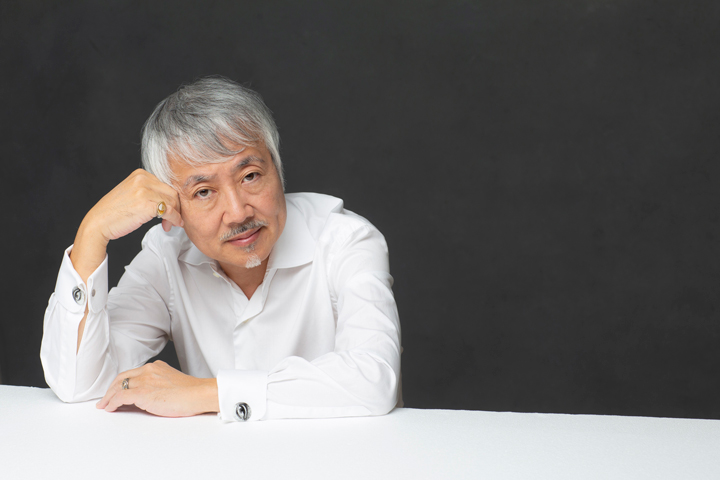CONTACT
YASUAKI SHIMIZU
総合的な音楽制作者として様々な領域で活動を展開。1978年アルバムデビュー。ソロ作品のほか、80年代始めに活動した実験的バンド「マライア」、「サキソフォネッツ」プロジェクトやコラボレーション作品含め、現在までに40枚以上のアルバムを発表。90年代後半、「バッハ/サキソフォン/スペース」という独自のコンセプトのもと、J.S.バッハ「無伴奏チェロ組曲」をテナーサキソフォンのために編曲・演奏するという世界初の試みに着手。『バッハ・ボックス』(97年)で、レコード大賞企画賞を受賞する。この試みの一環として、地下採石場や美術館など、通常のコンサートホールとは異なる、特殊な意味をもつ空間に着目した録音やパフォーマンスも精力的に行っている。
2006年、清水を中心とするサキソフォン・クインテットとしてサキソフォネッツを再始動させ、清水が長年作曲で取り組んでいる五音音階作品を収めた『ペンタトニカ』をリリース。2010 年、東京・すみだトリフォニーホールの委嘱作品として、バッハ「ゴルトベルク変奏曲」をサキソフォン5本とコントラバス4本という前代未聞の編成で編曲、初演。その後もアレンジに変容を重ね、アルバム『ゴルトベルク・ヴァリエーションズ』(15年)を結実させる。
また、プロデューサー、作曲家、編曲家としての活動範囲も多岐に渡り、坂本龍一、加藤和彦、上野耕路といった先鋭的なミュージシャンの作品から北島三郎の演歌「漁歌」まで多様な音楽の制作に関わる。映像に寄せる関心も強く、映画、テレビ、マルチメディア作品の音楽制作も多数。サントラを手掛けた米国ドキュメンタリー映画『キューティー&ボクサー』(13 年)は第86回アカデミー賞にノミネート、2016年 第37回米エミー賞で最優秀賞を獲得する。近年ではNHK制作の連続ドラマ『透明なゆりかご』(18年)、『お別れホスピタル』(24年)の音楽を制作。
Musical boundaries are no barrier to Yasuaki Shimizu, whose forty-year career spans an impressively broad range of genres. He is recognized for his crossover albums, film soundtracks, and high-profile installations and collaborations. His peerless back catalog reached a wider audience following the 2015 reissue of his band Mariah’s 1983 classic Utakata no Hibi, a masterful hybrid of Japanese folk and pop idioms. Reissued in 2017, cult favorite Kakashi playfully weaves together minimal dub and musique concrète.
In the mid-1990s, Shimizu’s passion for the music of J.S. Bach surfaced in two groundbreaking recordings of the entire Cello Suites—the first-ever tenor saxophone interpretations of these pieces. Shimizu has also recorded as Yasuaki Shimizu & Saxophonettes, and in 2006 he relaunched the Saxophonettes as a saxophone quintet. Following the release of Pentatonica (2007), an album of original and traditional pentatonic tunes, Shimizu returned his focus to Bach, releasing his arrangement—for five saxophones and four contrabasses—of the Goldberg Variations in 2015.
A prolific composer for film and TV, Shimizu has produced soundtracks for, among many others, the Oscar-nominated documentary Cutie and the Boxer (2013), which won Outstanding Achievement for Original Music Score at the Cinema Eye Honors.
Shimizu’s boundary-breaking approach to music goes beyond composition and performance. He views physical space as an extension of his instrument, and often “plays the space,” making use of unique acoustic environments in which to record and play.
